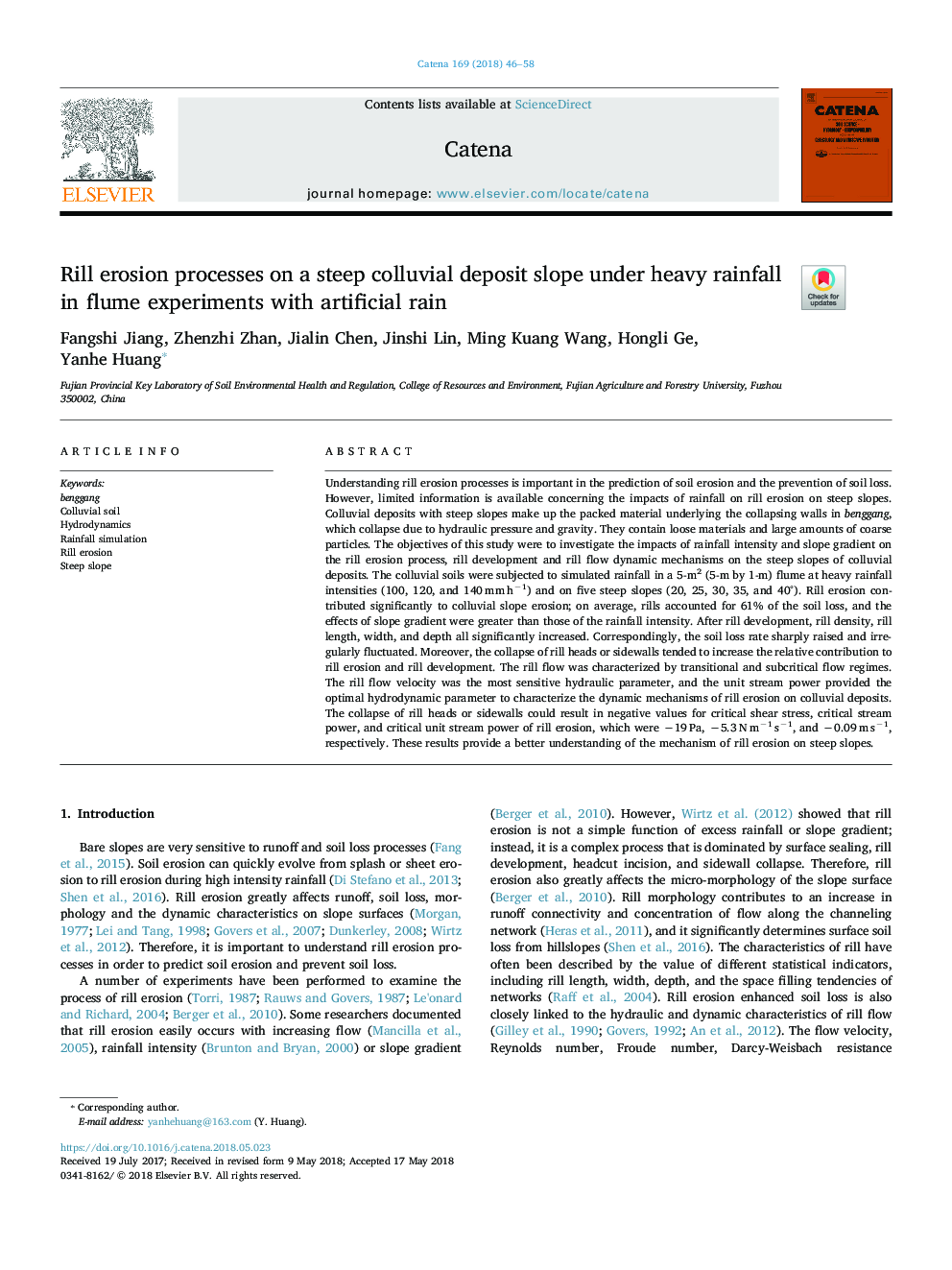| کد مقاله | کد نشریه | سال انتشار | مقاله انگلیسی | نسخه تمام متن |
|---|---|---|---|---|
| 8893409 | 1629185 | 2018 | 13 صفحه PDF | دانلود رایگان |
عنوان انگلیسی مقاله ISI
Rill erosion processes on a steep colluvial deposit slope under heavy rainfall in flume experiments with artificial rain
ترجمه فارسی عنوان
فرسایش سرخ در یک شیب انبوه شیب دار با بارندگی های سنگین در آزمایش های فلوئر با باران مصنوعی می
دانلود مقاله + سفارش ترجمه
دانلود مقاله ISI انگلیسی
رایگان برای ایرانیان
کلمات کلیدی
موضوعات مرتبط
مهندسی و علوم پایه
علوم زمین و سیارات
فرآیندهای سطح زمین
چکیده انگلیسی
Understanding rill erosion processes is important in the prediction of soil erosion and the prevention of soil loss. However, limited information is available concerning the impacts of rainfall on rill erosion on steep slopes. Colluvial deposits with steep slopes make up the packed material underlying the collapsing walls in benggang, which collapse due to hydraulic pressure and gravity. They contain loose materials and large amounts of coarse particles. The objectives of this study were to investigate the impacts of rainfall intensity and slope gradient on the rill erosion process, rill development and rill flow dynamic mechanisms on the steep slopes of colluvial deposits. The colluvial soils were subjected to simulated rainfall in a 5-m2 (5-m by 1-m) flume at heavy rainfall intensities (100, 120, and 140â¯mmâ¯hâ1) and on five steep slopes (20, 25, 30, 35, and 40°). Rill erosion contributed significantly to colluvial slope erosion; on average, rills accounted for 61% of the soil loss, and the effects of slope gradient were greater than those of the rainfall intensity. After rill development, rill density, rill length, width, and depth all significantly increased. Correspondingly, the soil loss rate sharply raised and irregularly fluctuated. Moreover, the collapse of rill heads or sidewalls tended to increase the relative contribution to rill erosion and rill development. The rill flow was characterized by transitional and subcritical flow regimes. The rill flow velocity was the most sensitive hydraulic parameter, and the unit stream power provided the optimal hydrodynamic parameter to characterize the dynamic mechanisms of rill erosion on colluvial deposits. The collapse of rill heads or sidewalls could result in negative values for critical shear stress, critical stream power, and critical unit stream power of rill erosion, which were â19â¯Pa, â5.3â¯Nâ¯mâ1â¯sâ1, and â0.09â¯mâ¯sâ1, respectively. These results provide a better understanding of the mechanism of rill erosion on steep slopes.
ناشر
Database: Elsevier - ScienceDirect (ساینس دایرکت)
Journal: CATENA - Volume 169, October 2018, Pages 46-58
Journal: CATENA - Volume 169, October 2018, Pages 46-58
نویسندگان
Fangshi Jiang, Zhenzhi Zhan, Jialin Chen, Jinshi Lin, Ming Kuang Wang, Hongli Ge, Yanhe Huang,
